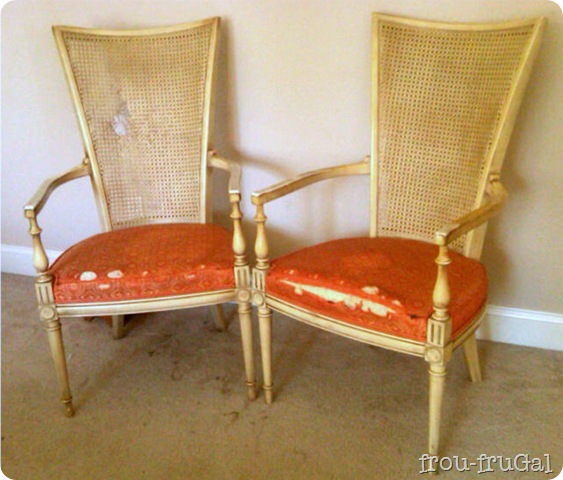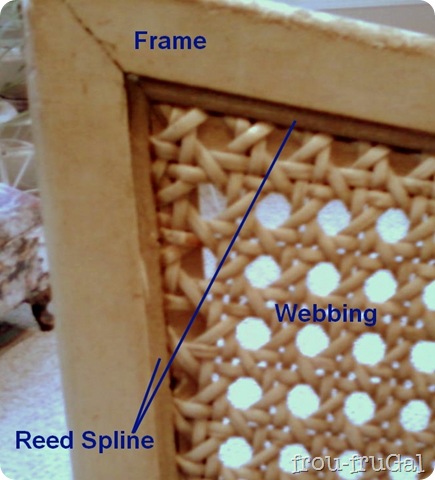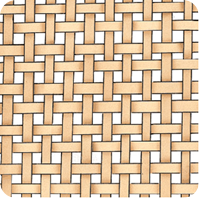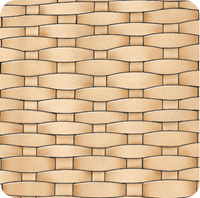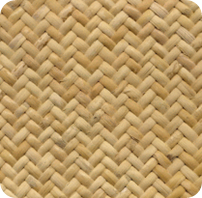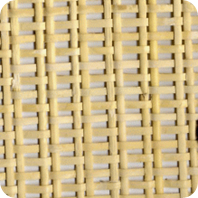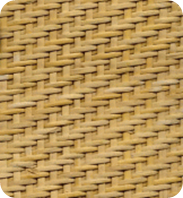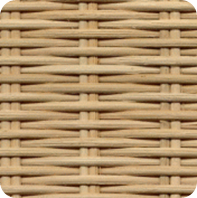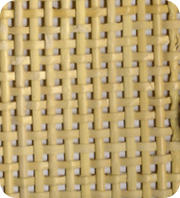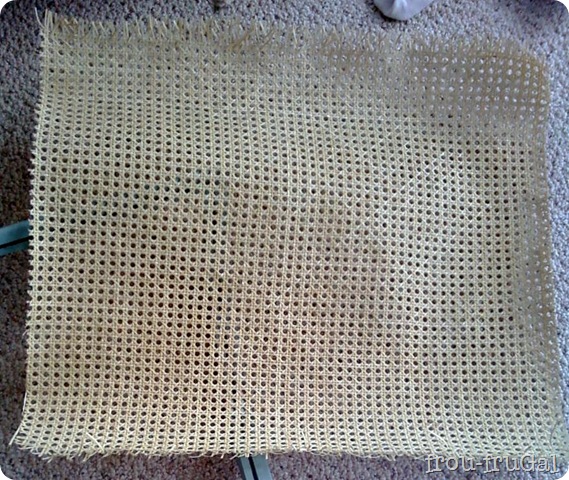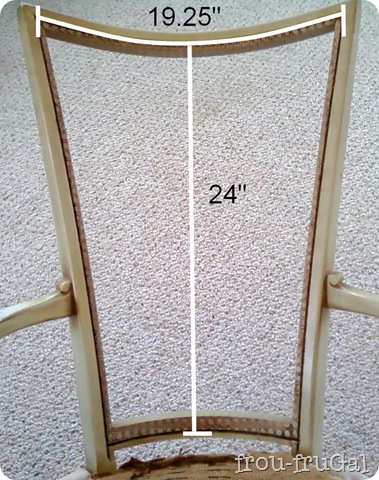Replacing Cane Webbing – Getting Started
I have the most exciting news!
Miss Mustard Seed has graciously agreed to host one my tutorials today! Squee!!! I know, right? Someone pinch me.
Awhile back, I saw some cane-backed chairs that MMS had purchased and was going to redo. Since the caning was damaged on one of the chairs and being the Buttinsky, helpful person that I am, I offered to walk MMS through the process of replacing the caning since I’ve been around the caning block a time or two.
MMS was excited to learn the process, but if you follow her, you know that no moss grows on that girl. She’s one busy lady cranking out the furniture for her stores and she had to get those chairs done, like yesterday. Things take me longer to do, but when I finally found some chairs, I asked MMS if she was interested in hosting my tutorial and here’s where we are today!
I found a couple of cane-backed chairs on Craigslist that needed the cane replaced. I picked up these two beauties for $20. The owner accidentally put a hole in one of the chairs when he was moving them, hence the great price. That, and they need some lovin’. I think you’re going to like where these chairs are going, but you’re going to have to wait a day or two for the big reveal.
Below is my guide to help you get started. In this post, I’ll give you some terms, show you some cane patterns, and help you measure your section.
Over on Miss Mustard Seed, I’ll show you how to remove the old cane webbing and install the new webbing.
Determine if you have Hand-Woven or Sheet Cane Webbing
Back in the day, caned furniture was all woven by hand. These days, the caning, or Sheet Cane Webbing, is made like fabric (sheet) and is set into a groove in the frame and held in place by a reed spline.
How do you know which type you have?
Hand-woven caning is identified by a series of small holes around the edge of the furniture frame. These holes can be seen from both the front and the back. If you have this type of chair and need to replace the caning, you’ll either need to hire a professional or take a class. It’s a process far above my pay grade!
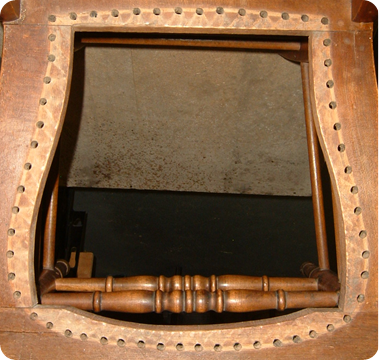
If you have sheet caned furniture, you won’t see the holes. Instead, you’ll see a thin piece of reed spline between the edge of the furniture frame and the webbing. The frame will be solid in the back and you will not be able to see the spline from the back.
Where to Buy Caning Supplies
If you have a good woodworking store near you, check with them to see if they sell cane webbing. Some woodworking stores sell it in kits and others will have a more varied supply. It’s hit and miss, though, so I’d call the stores before driving all around. You won’t find the webbing at a fabric store or Hobby Lobby.
I don’t have any such store near me, so I went to www.rockler.com to order my supplies. I love how easy their site is. They have good illustrations of the supplies and their prices are pretty standard. Rockler.com is a great site to use for the first-time caner.
I stumbled upon another site, www.franksupply.com, which sells all sorts of cane webbing. I’ve never actually used their site, and it’s geared more towards people who know what they’re looking for, but it is another option for you.
The prices for cane webbing are pretty standard on all sites I checked, so if you’re shopping around for price, it’s not going to vary that much, but you may find better shipping deals.
Webbing Patterns
First, if you plan to match the webbing, you’ll need to determine what type of webbing you have. Most caned furniture uses conventional weave, or 6-way Weave.
This is the conventional weave pattern.

To be “conventional” the space from center-of-one-hole to the center-of-the-next-hole needs to measure half an inch. There’s webbing that has bigger holes and smaller holes, but half-an-inch is the standard. Hey, they call it “conventional” for a reason.
If you plan to replace all the webbing, you can go with whatever pattern and size you like. Keep in mind that the more open weave patterns are not going to be as sturdy as some of the tighter weaves.
If you’re webbing is on a seat, you’ll want a tighter weave pattern to give the seat the strength it needs. The looser weave patterns would be great for the sides of chairs where there’s not going to be a lot of pressure.
Here are some other patterns that are available.
The first two illustrations are from the Rockler site. The Conventional, the Modern Open Weave and Modern Closed Weave are the only patterns that Rockler sells, which are great options.
The rest of the pictures above are some webbing patterns that are sold on franksupply.com. If you hover your mouse over the picture, you’ll see the name of the pattern. Clicking on the pattern will take you to the site for ordering.
Caning is generally sold in the following widths: 12”, 14”, 18” and 24”. Since you can turn it either direction, you can save yourself some money by ordering the smallest width possible. The price goes up with the width. Webbing is usually sold by the linear inch.
My chair measured as follows:
Add two inches to both the length and width to give you an extra inch on each side.
I ordered the 24” width and I purchased 26” at $.69/linear inch ($17.94).
See the dark line around the hole of the chair? This is called the groove. You’ll need to order a reed spline to fit into the groove. Reed spline comes in rolls of set lengths. Rockler sells them in 10’ lengths and FrankSupply sells them in 7’ lengths.
See how the spline is wider at the top and gets narrower at the bottom? This helps you wedge it into the groove. The spline will hold the caning in the chair.
To know what size of spline you need, you’ll need to measure the width of the groove. Rockler does a great job of telling you the widths and depths of standard-sized grooves, while the FrankSupply site gives you more width options to choose from.
On Rockler.com the measurements can be in the thirty-seconds’ of an inch, so get a ruler or tape measure with that increment shown. The measurements get even smaller on the FrankSupply site.
For your reference, I’ve marked the measurements on the ruler so you can see what they are.
Once you have the measurements for your webbing and the groove width measurement, you’re ready to order.
Another thing you might want to purchase are some hardwood caning wedges.
The wedges will help you force the caning into the groove. I had some wood shims on hand, so I just cut them down to fit the groove. If you think you’re going to do a lot of caning replacement, I’d invest in the wedges.
One more item you’ll need is glue. I used Gorilla Wood Glue, but there are glues made specially for caning if you want to go that direction.
While you’re waiting for your supplies to arrive, you have time to remove any remaining webbing, paint or refinish the chair frame, or sew any new seats or cushions. I had standard shipping on Rockler and it took about 3 days to get my supplies.
Be sure to check out my post on Miss Mustard Seed to find out how to remove the old cane webbing and install the new webbing.
I’ll show you the big reveal soon!
Suesan
Thank you for reading Frou-FruGal. For more projects, please click to my site, http://froufrugal.blogspot.com


